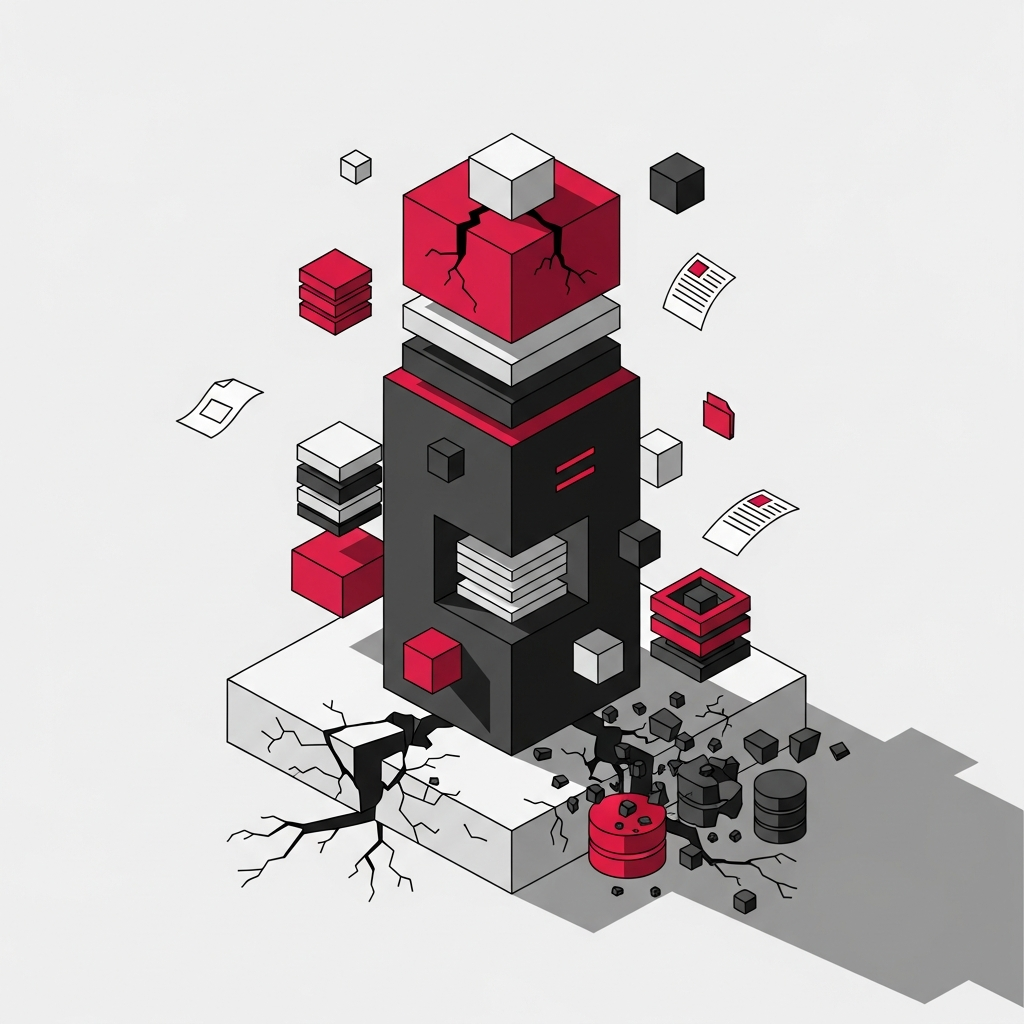Avoiding The Looming AI Unit Economics Crisis

The pilot was a spectacular success. Your new AI tool is delivering the "wow" moments you hoped for, and adoption is climbing. The team is celebrating a breakthrough. But a few months later, a different kind of breakthrough happens: your cloud bill breaks through its forecast and lands, three times larger, in the CFO’s inbox.
This isn't a sign of failure. It's a sign you've found something valuable. But it's also your entry into the new reality of AI unit economics.
For decades, we’ve operated under the comfortable laws of software. Build it once, and the marginal cost of delivering it to the next user is practically zero. AI shatters this paradigm. It doesn't operate like a software license; it operates like a utility. Every time a user interacts with your AI, the meter is running. This creates a critical paradox: the very engagement and success you strive for are now direct multipliers of your cost.
Ignoring this will lead to unsustainable financial models. But confronting it is where the real value is unlocked. Once you’ve got a compelling use case identified and a working pilot, the question is no longer "Can AI do this?" but rather, "What is the most efficient, scalable, and profitable way to deliver it?"
The New Math of AI: Why Your Old Playbooks Are Obsolete
The fundamental disconnect between traditional software and AI is the ongoing cost of inference. While model training gets the headlines, it’s the recurring cost of inference—using the model to generate a response—that dominates your P&L.
Think of it this way: training a model is like building a power plant. It's a huge upfront cost, mostly borne by the AI giants. But inference is the electricity that flows out of it, and you pay for every kilowatt your customers and your employees use, forever.
This reality creates a "budget shock" for leaders. For customer-facing products, it’s a "margin shock" where costs scale with usage. For internal tools, it’s an "ROI shock" where an efficiency-driving project suddenly has an operational expense that dwarfs its benefits. This is the AI "Success Tax"—a penalty for building something people love before engineering its cost structure.
Deconstructing the True Cost: Beyond the API Fee
Your per-token API fee is just the tip of the iceberg. A myopic focus on API costs leads teams to drastically underestimate the Total Cost of Ownership (TCO). Whether you "buy" access to a proprietary model or "build" on a self-hosted one, you must account for a complex web of expenses in compute, data lifecycle management, maintenance, and the hidden costs of integrating with legacy systems. Understanding this full picture is the first step. The second is actively managing it.
From Pilot to Production: Engineering for Profitability
The unit economics conversation should happen after a pilot proves success, not before. Once you've confirmed you have a valuable business case, the focus must shift from proving function to engineering for efficiency. This is where you translate proven value into a scalable, sustainable system. Here are the five core technical strategies to make that happen.
1. Build a Model Router
Instead of sending every request to your largest and most expensive model, implement a routing system. A lightweight “model router” classifies incoming requests by complexity, sending simple cases to smaller, faster, cheaper models. It escalates to the powerhouse models only when necessary. This dynamic dispatch pattern can cut average per-request costs by up to 60% while maintaining quality.
2. Practice Context Engineering
Every token costs money. The art is not simple “word economy”, it’s context engineering. This means obsessively optimizing the data you pass into the model’s context window. Trim redundant system prompts, use structured templates to minimize irrelevant history, and pass only the minimal required context per task. Careful context control can yield 10–20% savings per call and often improves the model's reasoning clarity.
3. Implement Cached Responses
Caching isn’t just about speed, it’s about reliability and token efficiency. For repetitive or well-defined scenarios, storing and reusing pre-approved responses is a powerful strategy. When users ask known questions or trigger solved business logic, the system can serve cached responses instantly. This saves tokens, cuts latency, and enforces consistency on critical answers without ever calling an expensive model.
4. Design Hybrid Logic Systems
Not every step in a workflow needs an LLM. Use simple, deterministic code for tasks that are repeatable: calculations, data validation, or document routing, and reserve the expensive AI calls for the complex reasoning steps where they add the most value. This hybrid architecture prevents you from wasting compute on predictable outcomes and focuses your AI spend where it counts.
5. Fine-Tune Smaller Models After Pilots
Once you’ve proven a pilot’s success with a large, general-purpose model, consider fine-tuning a smaller, open-source model on your own data. This can replicate most of the performance at a fraction of the inference cost. Fine-tuning carries an upfront investment but becomes dramatically cheaper at scale. This is where a sharp analysis of unit economics and ROI is critical to making the right long-term bet.
Unlocking Value: The New Discipline of AI Economics
Mastering these technical levers requires a new kind of function, one that blends deep financial acumen with sophisticated AI engineering. Some call it FinOps for AI (yeah we know, just what the business world needs another -Ops job function), but it's more than that. It’s a strategic discipline focused on the continuous optimization of AI cost, performance, and business value.
We won’t sugarcoat it; this is a hard team to assemble. It requires experts who understand the business case but can also debate the merits of fine-tuning a Llama 3 model versus building a router with Claude Haiku, Sonnet and Opus.
This isn't a problem you can solve in Excel. The AI economics formula has too many interdependent variables. You need AI experts in the room who understand why certain costs can be cut and others can't, and who can build the complex systems required to do it.
For most mid-market companies, building this capability in-house is a distraction from their core mission. The smarter move is to partner with specialists who live and breathe this work.
Your Next Move: From a Good Idea to a Great Business
We’ll admit, the opening might have leaned a little clickbait. But while the warning is real, the real story isn’t the crisis, it’s the opportunity hiding underneath it
A successful pilot with challenging unit economics is a great place to be. It means you’ve found product-market fit for a high-value use case. You've done the hard part. That’s the hard part. We’d like to point out that the key here is having real business problems being solved; generic copilots that everyone is tinkering with usually burn time and budget chasing a problem that doesn’t exist.
Your exploding AI bill isn't a crisis; it's an investment signal. It’s the trigger to bring in engineering experts who can architect for scale. The goal is to move from a working proof-of-concept to a production-grade system that is not only transformative but profitable. This is the moment to partner with a team (like MorelandConnect) to translate proven value into a sustainable competitive advantage by using model routing, context engineering, fine-tuning, and hybrid design to maximize your return on AI investment.



